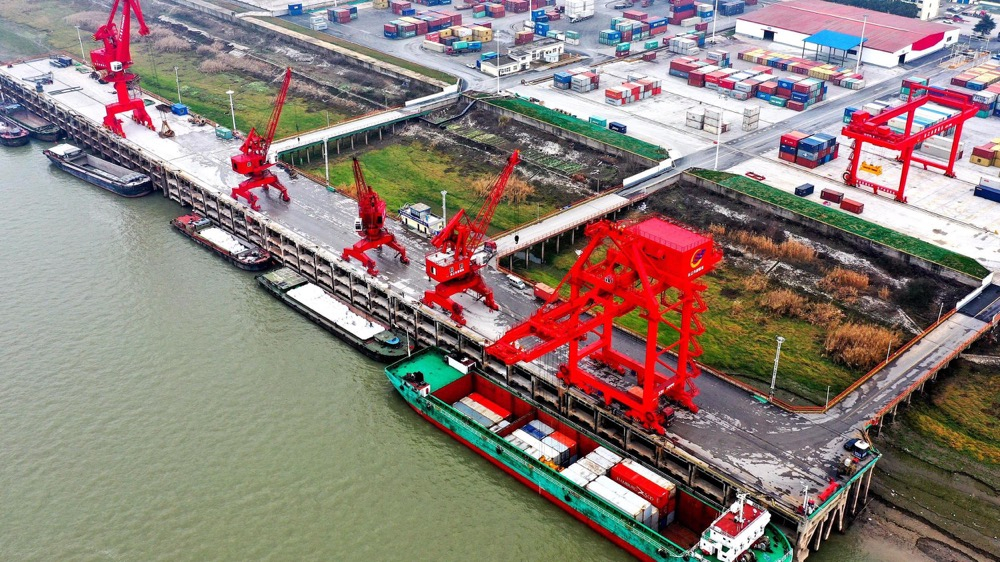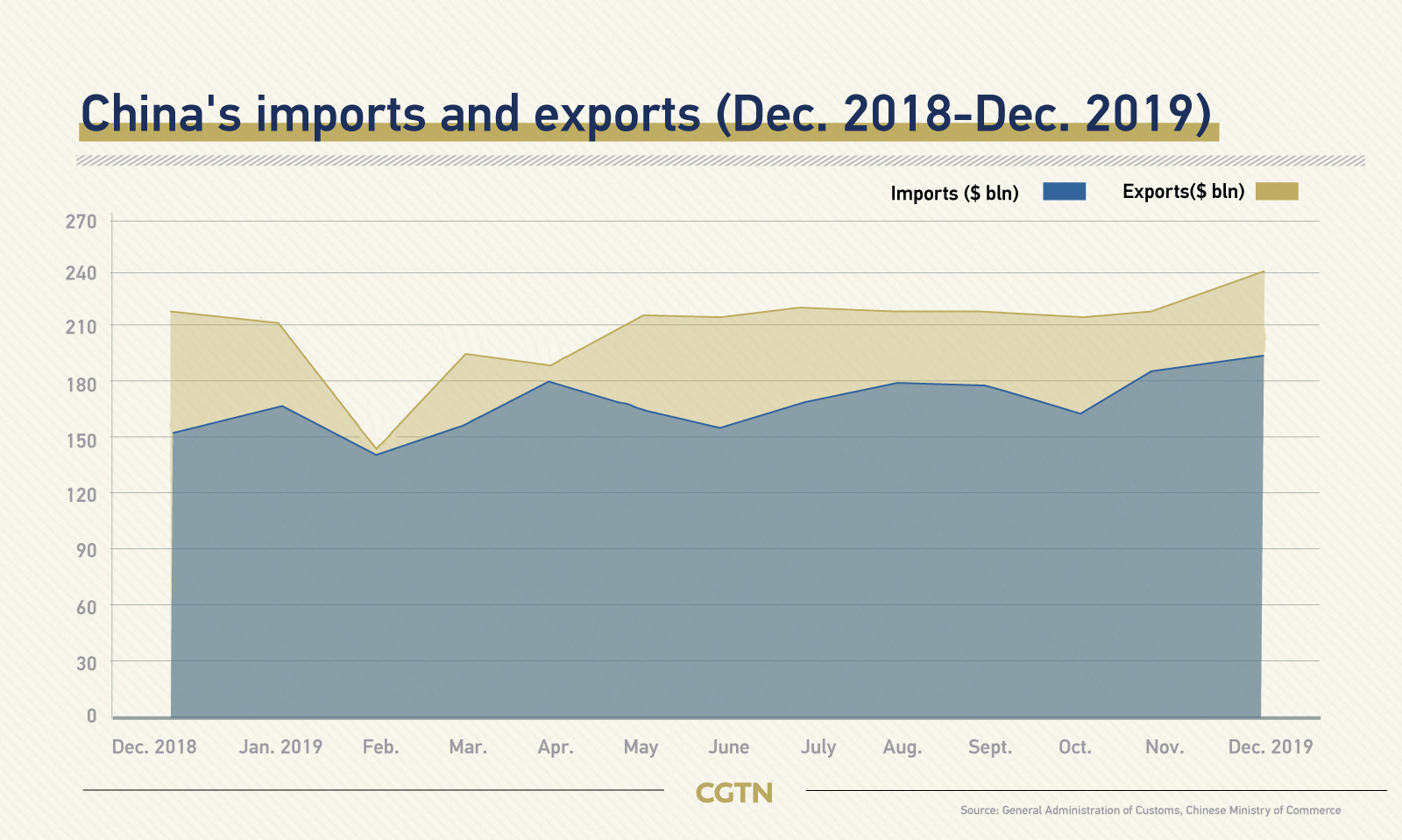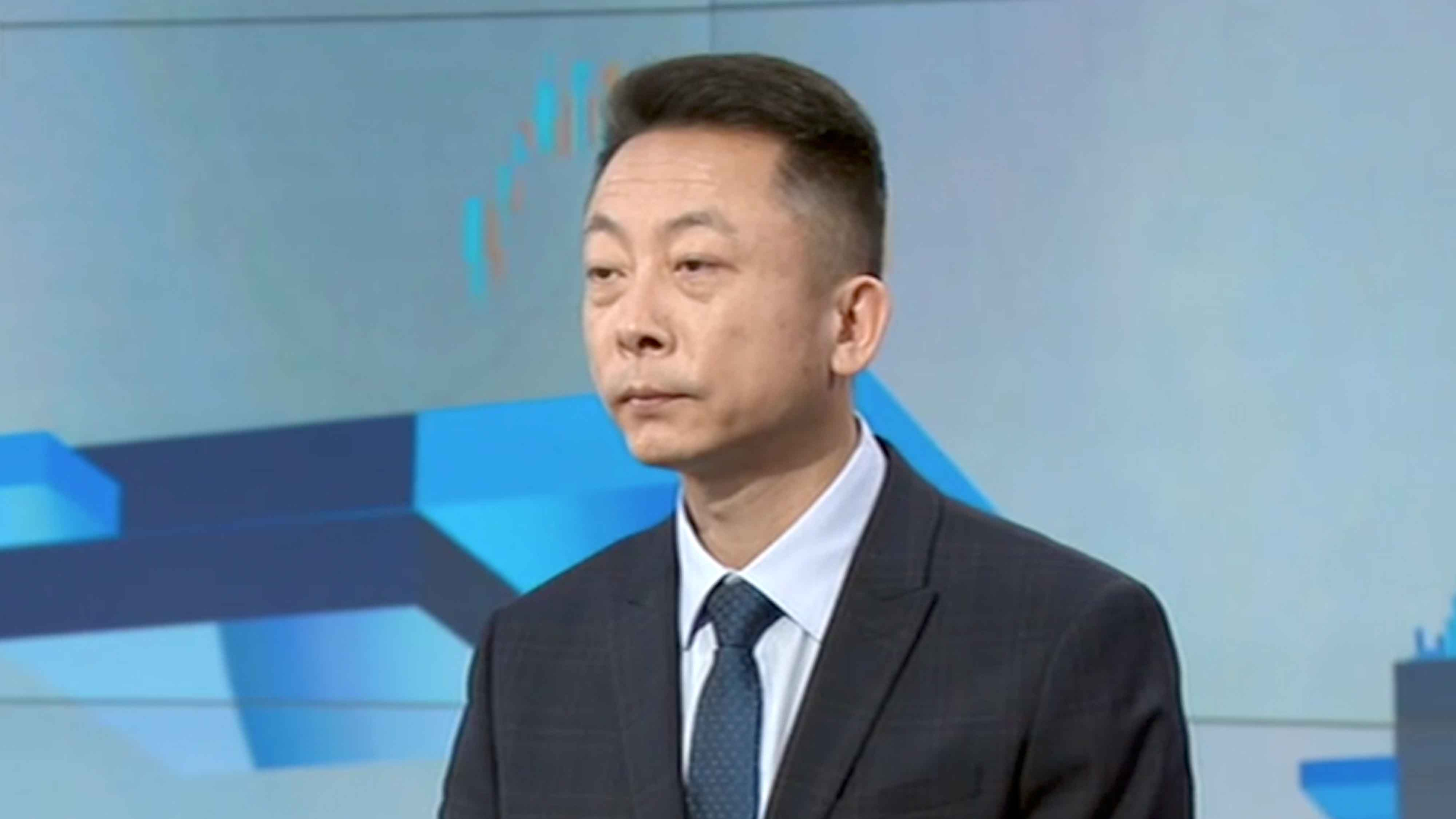02:04

China's foreign trade rose 3.4 percent year-on-year to a historic high of 31.54 trillion yuan (about 4.6 trillion U.S. dollars) in 2019, the General Administration of Customs said Tuesday.
Exports stood at 17.23 trillion yuan last year, up 5 percent from a year earlier, while imports came in at 14.31 trillion yuan, up 1.6 percent, resulting in a trade surplus of 2.92 trillion yuan, which expanded by 25.4 percent, customs data showed.
China's foreign trade remained overall stability and with improved quality. The country's trade data kept ascending by each quarter with 7.03 trillion yuan for the first quarter, and 7.68 trillion yuan, 8.26 trillion yuan and 8.59 trillion yuan for the second, third and fourth quarters, said Zou Zhiwu, vice minister of the General Administration of Customs.

In December alone, the country's foreign trade surged 12.7 percent to a monthly record of 3.01 trillion yuan, with exports reaching 1.67 trillion yuan, and imports 1.34 trillion yuan, all hitting monthly historical peaks.
The European Union remained China's largest trading partner during the period, with bilateral trade volume up eight percent from the previous year to 4.86 trillion yuan, followed by the ASEAN, up 14.1 percent to 4.43 trillion yuan.

Trade with the United States in 2019, however, fell 11.1 percent to 3.4 trillion yuan.
The country's trade mix continued to improve with the general trade, which accounts for 59 percent of the total, growing 5.6 percent to 18.61 trillion yuan in 2019, an increase of 1.2 percentage points from the previous year.
Meanwhile, exports of mechanical and electrical products and labor-intensive products accounted for nearly 60 percent of the total exports in 2019. Last year, China exported 10.06 trillion yuan worth of mechanical and electrical products, an increase of 4.4 percent.
03:06

Meat imports grew fast
Imports of meat registered the fastest growth in comparison with that of other major commodities in 2019.
China imported 2.11 million tonnes of pork and 1.66 million tonnes in 2019, up 75 percent and 59.7 percent respectively year-on-year, customs data showed. The country has expanded imports of pork and introduced measures to support hog production to tackle pork shortage affected by African swine fever.
Soybean imports rose 0.5 percent to 88.51 million tonnes in 2019. U.S. soybean exports to China fell 47.6 percent year-on-year in 2018, dragged by ongoing trade tensions. Chinese Vice Premier Liu He on Monday arrived in Washington to conclude a phase one trade agreement the two countries agreed in December which contains imports of U.S. agricultural products.
In addition, China imported 1.069 billion tonnes of iron ore, 506 million tonnes of crude oil and 96.56 million tonnes of natural gas, an increase of 0.5, 9.5 and 6.9 percent respectively year-on-year.

China imported more meat in 2019. /VCG Photo
China imported more meat in 2019. /VCG Photo
Private enterprises stood out
Private enterprises surpassed foreign-invested enterprises for the first time, becoming China's largest foreign trade entity. In 2019, the imports and exports of private enterprises reached 13.48 trillion yuan, an increase of 11.4 percent, data showed.
Private enterprises accounted for 42.7 percent of the total foreign trade, up 3.1 percentage points compared with 2018.
The private sector plays a significant role in China's economic development trajectory, contributing over 50 percent of tax revenue, 60 percent of GDP, 70 percent of technological innovation, 80 percent of urban employment and 90 percent of new jobs, according to the National Development and Reform Commission.
The total revenue of China's top 500 private companies hit 28.5 trillion yuan (4.13 trillion U.S. dollars) in 2018, an increase of 16.44 percent year-on-year, according to a report released by the All-China Federation of Industry and Commerce in August 2019.
China has in recent years given high priority to private business with a slew of policies being rolled out. The State Council in December, for example, announced 28 new policies to provide a level playing field for the private economy, especially help solve financing difficulties. A two-trillion tax cuts campaign was also launched last year, with a focus on small and private businesses.
In addition, imports and exports of foreign-invested enterprises stood at 12.57 trillion yuan, accounting for 39.9 percent of China's total foreign trade value.